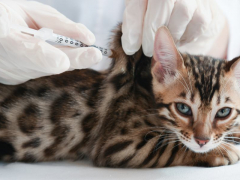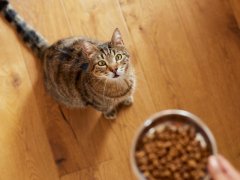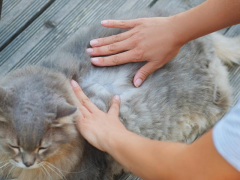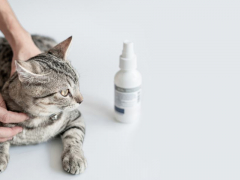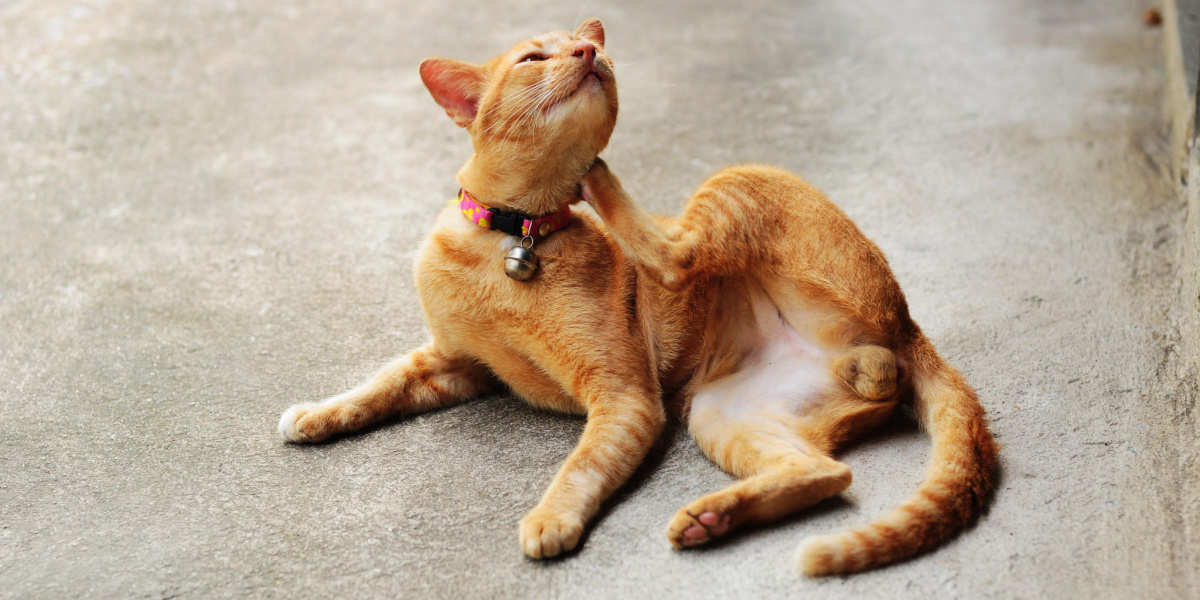
Diatomaceous earth is a powdered material that may be used as a natural mechanical insecticide and dewormer, and as a health supplement. In this article, you’ll learn what diatomaceous earth for cats is, its most common uses, precautions to be aware of, and some frequently asked questions.
Diatomaceous Earth for Cats Overview

About Diatomaceous Earth for Cats
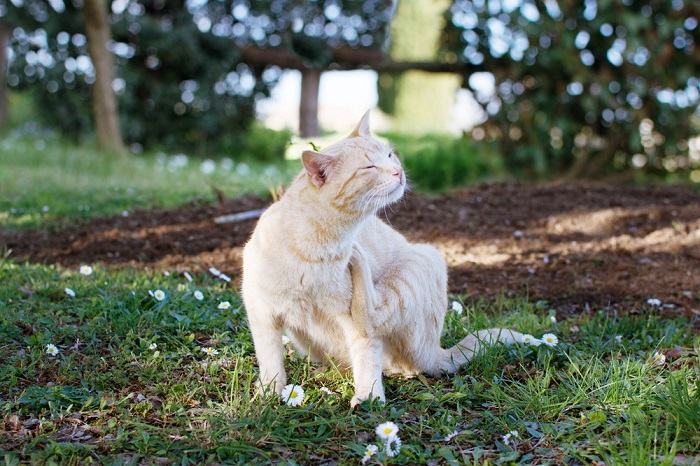
If examined under a microscope, diatomaceous earth powder resembles tiny shards of glass.
Diatomaceous earth is a colorless to gray, fine-powdered substance. It originates from microscopic fossilized marine life called diatoms.
Diatoms are tiny aquatic organisms similar to phytoplankton or algae. They are unique from other similar organisms in that they have a tiny little “skeleton” made of silica. Silica, or silicon dioxide, is a very common mineral, also found in sand and stone, and is a major component of glass.
If examined under a microscope, diatomaceous earth powder resembles tiny little shards of glass, which is important as this contributes significantly to how it works when used for pest control.
Although diatoms still exist today, diatomaceous earth is composed of fossilized remains of ancient diatoms, which are broken down and deposited in the sediment at the bottom of oceans, lakes, rivers, and other bodies of water. As these waters change and recede, the diatom fossils persist in the sedimentary rock that remains and are then mined to obtain the resulting powdered form.
Types of Diatomaceous Earth
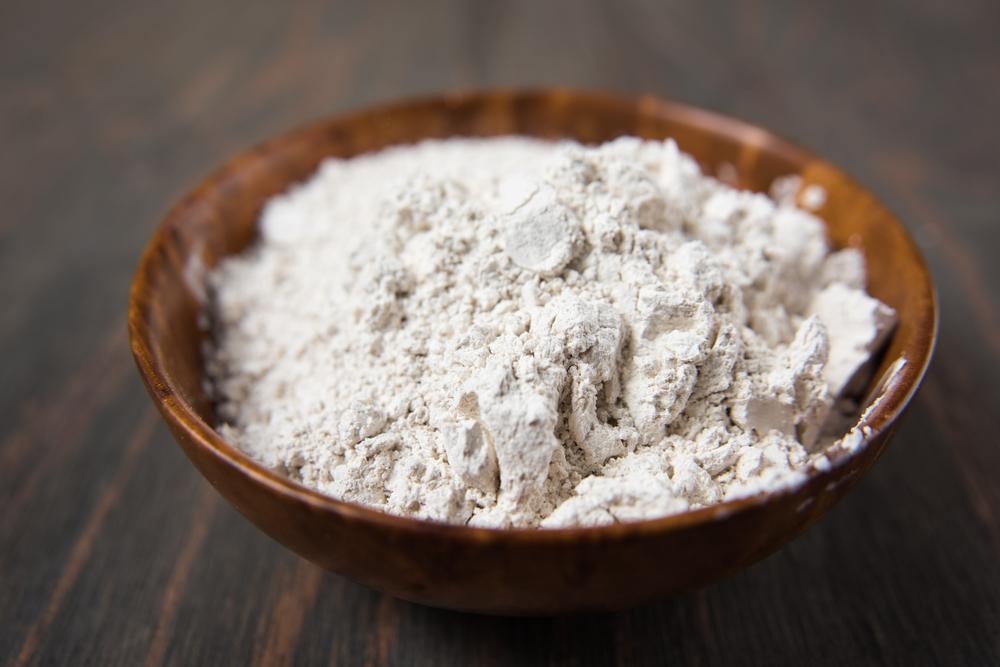
Only food-grade diatomaceous earth should be used around pets and people.
There are two main forms of diatomaceous earth. The first is called amorphous, which is also called “food grade” diatomaceous earth. This is the most natural form and is the form we talk about when considering use of this material for pets and people.
The second form is called crystalline, or “filter grade” or “pool grade” diatomaceous earth. This form cannot be used in pets or people. This is a form that is typically used in swimming pools or for other filtration purposes.
It undergoes intense heat processing to convert the amorphous form into the more crystalline form that contains a considerably higher amount of crystalline silica. Although this form may also occur naturally if near geologic sources of intense heat, it is far less commonly found in nature.
Food-grade diatomaceous earth typically contains less than 1% crystalline silica. Filter-grade diatomaceous earth by contrast, may contain any percentage of crystalline silica, often very high amounts over 50% to 70%.
Using the appropriate form of diatomaceous earth for cats is extremely important, as we’ll discuss further in the side-effects of diatomaceous earth for cats.
Also Read: The 6 Best Flea Shampoos For Cats
What Does Diatomaceous Earth Do for Cats?
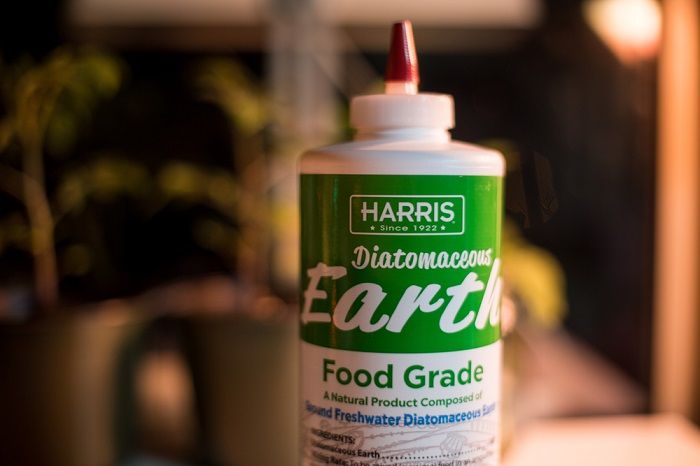
Food-grade diatomaceous earth is used as a non-chemical method to control fleas, ticks, and other parasites.
The principle behind diatomaceous earth being used for flea and parasite control relates to the microscopic sharpness of the glass shard-like powdered components as well as their absorbent ability.
When diatomaceous earth comes in contact with a flea (or a tick, many other arthropods, and worms) the shard-like components scratch and abrade the exoskeleton, damaging it. The absorbent properties of the material then absorb oils and fats from the insect’s skin, leading to desiccation or drying, and eventual death of the pest.
Reportedly, this process may take as little as four hours when it comes to fleas. This process is considered a mechanical (versus a chemical) method of killing insects and parasites.
Proponents of diatomaceous earth point out that as this is a mechanical process that cannot be stopped, there is no risk of parasite resistance to diatomaceous earth as can be seen with chemical/drug agents contained in oral and topical flea control products.
Diatomaceous earth can only have this desiccation effect on adult parasites like fleas, ticks, and worms. The eggs of these parasites are not affected, so the product either needs to be used for a period long enough for the eggs to hatch and the resulting adults to also be killed, or another effective (chemical/drug) product needs to be used.
Also Read: How To Get Rid Of Fleas On Your Cat
How To Use Diatomaceous Earth for Cats
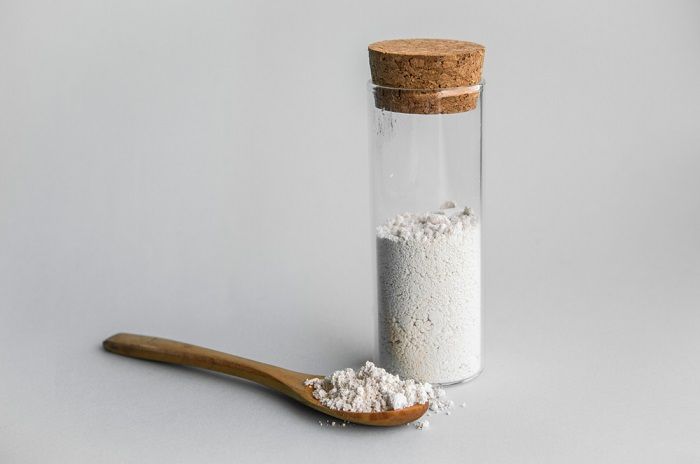
Food-grade diatomaceous earth can be sprinkled in your home or yard, or fed to cats orally in small amounts.
Common suggestions for diatomaceous earth use in cats include spreading the food-grade powder in the home on furniture, carpeting, and bedding to kill fleas in the home environment, as well as applying the powder directly to the coat of the cat, to kill fleas directly on the pet.
Food-grade diatomaceous earth is also used as a product purported to kill intestinal parasites when administered orally in small amounts. The food-grade diatomaceous earth works in the same way as it does for external parasites.
It generally passes through the digestive tract with very little being absorbed, but abrades the cuticle of parasites present in the digestive tract, leading to their desiccation and susceptibility to breakdown by the digestive tract.
Also Read: Cat Fleas: Identification, Life Cycle, and Treatment
Other Benefits of Diatomaceous Earth
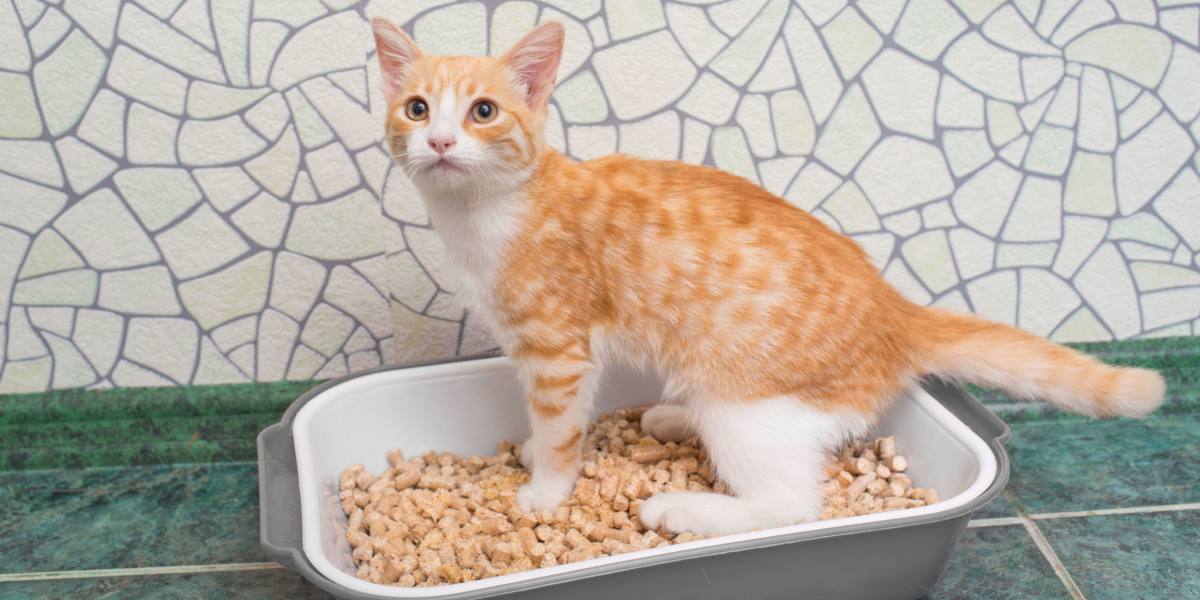
Some pet owners use small amounts of diatomaceous earth in the litter box to control odors.
Diatomaceous earth for cats is purported to have other health benefits. In addition to its main makeup as silicon and oxygen, the powder may also contain variable amounts of calcium, magnesium, and other trace minerals. Proponents of diatomaceous earth for both pets and people report benefits for skin, hair/fur, and nails. Digestive health benefits have also been described.
It is important to note that while food-grade diatomaceous earth is a material that is Generally Recognized as Safe (GRAS) by the FDA, there is little formal peer-reviewed scientific literature to support its use in pets as a health supplement, with most reason for use being based on anecdotal evidence and personal experience.
Other environmental uses for diatomaceous earth that have been described include using it in the litter box as an odor control agent, and in the lawn/garden as a general pesticide to control fleas, ticks, and other bugs, which might help reduce risk for indoor/outdoor cats that stay within the treated property.
Also Read: Cat Intestinal Parasites: Causes, Symptoms, & Treatment
Side Effects of Diatomaceous Earth for Cats

Food-grade diatomaceous earth is not toxic and safe to be ingested by pets, though it should not be inhaled.
The amorphous or food-grade form of diatomaceous earth is generally recognized to be a safe substance to be ingested or to be in contact with the skin and coat. It is not a toxic substance and has no major chemical properties, as its method of action is all mechanical and very little of the powder is actually absorbed by the body in the digestive tract.
However, there are some precautions that need to be kept in mind when using diatomaceous earth for cats. The biggest risk described for diatomaceous earth is that inhaling the powdered material can lead to respiratory concerns.
The filter-grade or crystalline form of diatomaceous earth can be incredibly dangerous if inhaled. According to the National Pesticide Information Center (NPIC), inhaling diatomaceous earth can lead to irritation of the nose and nasal passages, coughing, and shortness of breath.
Lung cancer has also been described in mice and from some of this data, diatomaceous earth in the crystalline form is considered a carcinogen.
This is the primary reason to never use filter or pool-grade diatomaceous earth and to always investigate the label and contents of any diatomaceous earth product.
Although crystalline/filter-grade diatomaceous earth carries the highest risk, amorphous or food-grade diatomaceous earth also has very small amounts of crystalline silica present. Care should always be taken to avoid a pet from inhaling the powder.
Diatomaceous earth, given its natural properties as a desiccant (a substance that absorbs moisture or dehydrates on contact), it can also cause irritation to the eyes if direct exposure occurs.
Essentially, with the exception of giving it with food as an oral product, use of diatomaceous earth should be avoided anywhere near the head or face.
Any cats with existing respiratory concerns, like feline asthma, might not be good candidates for diatomaceous earth use, even just within the home environment. Any particulate material that can be inhaled can present a further inflammatory airway risk.
The desiccant properties of diatomaceous earth can lead to skin irritation, especially if used regularly. This might not occur in all cats, but cats that already have dry skin, sensitive, inflamed, or itchy skin may not tolerate diatomaceous earth for cats applied to the skin and coat.
Topical Use of Diatomaceous Earth
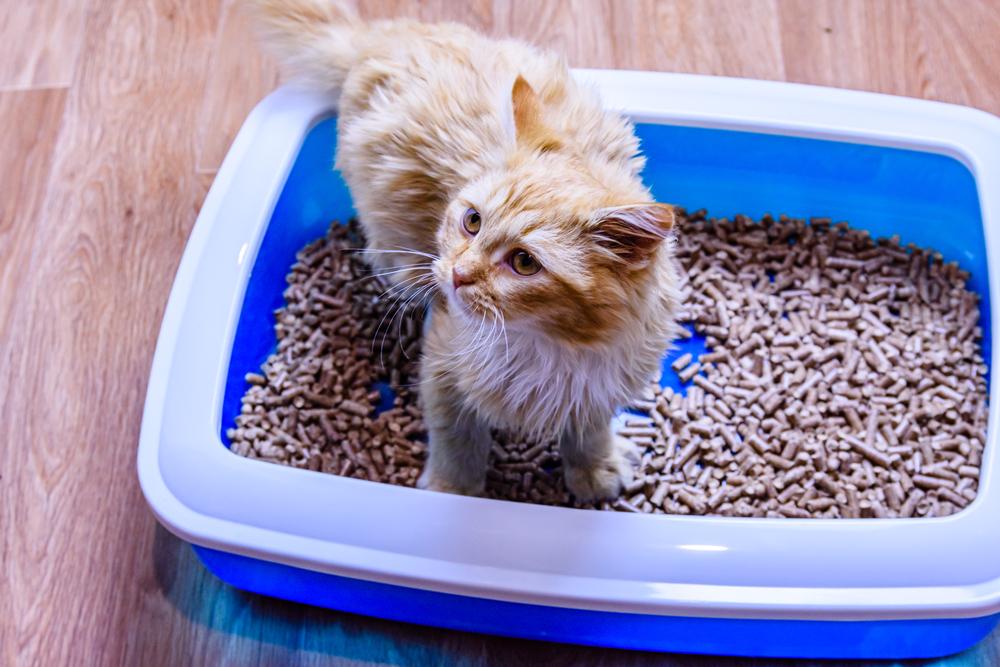
Although diatomaceous earth can be used topically on your cat’s body to kill fleas, this could lead to the cat ingesting more than is recommended when they groom their coat.
Because of the fastidious grooming nature that all cats have, many veterinarians do not recommend use of diatomaceous earth directly on a cat’s body. When using for an active flea infestation, the material must be left on for several hours.
Folks who use it routinely are sometimes applying it a couple times a week. There is some concern that even if the powder is not applied near the face itself that the cat is likely inhaling small amounts of it during grooming.
The other concern related to cat grooming behavior is that a cat might be constantly ingesting diatomaceous earth. Although not considered orally toxic in any way, a cat would be consuming a larger amount of the powder than is suggested for oral use, which could lead to digestive concerns.
While oral amounts suggested are fairly consistent, there are no consistent, measured amounts for topical or environmental use. This might lead to either under-use which may be less effective, or over-use which could increase the risk for inhalant or skin irritation concerns.
While diatomaceous earth is also used as a supplement/health product in people, any person who has a history of skin sensitivity or respiratory health concerns should use appropriate protection (face mask, gloves, etc.) when using the product in the home, or avoid its use altogether.
As an oral supplement, diatomaceous earth may contain several trace minerals, including calcium. Over-supplementing minerals beyond the body’s requirement might cause additional nutritional concerns and disease. Always make sure to discuss with your veterinarian if a dietary supplement would benefit your cat before starting one.
If you are ever concerned that your cat might have developed side effects while using diatomaceous earth either orally or topically, make sure to contact your veterinarian, the ASPCA Animal Poison Control Center (1-888-426-4435), or Pet Poison Helpline (1-855-764-7661) immediately for further advice.
Also Read: Drug Poisoning In Cats: Causes, Symptoms, & Treatment
Diatomaceous Earth for Cats Dosage
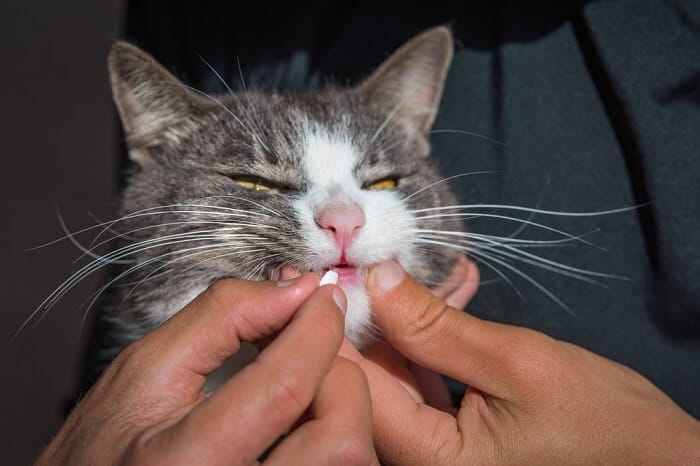
Like nutritional or dietary supplements, pet products containing diatomaceous earth are not FDA regulated.
The only suggested quantified amounts for diatomaceous earth that can be found are for oral use as a deworming agent. Keep in mind that these suggested doses have not been corroborated, as there is very little to no scientific literature to support the use of diatomaceous earth for cats for this purpose.
Diatomaceous earth is not an FDA-approved substance for treating, mitigating, or preventing any disease in pets, and no diatomaceous earth product can legally carry any label for those purposes.
There are many products out there for pets that contain diatomaceous earth and there is no regulation over what they might include, similar to nutritional or dietary supplements. Always make sure a product you use contains only 100% food-grade diatomaceous earth and that the company has quality control systems in place to help assure the content of the product.
It’s always recommended to discuss the best prevention methods for fleas and other parasites with your veterinarian. If your veterinarian recommends use of diatomaceous earth as a general parasiticide, make sure to find out what their recommendations are for amounts and how to use it based on their experience.
Oral Use of Diatomaceous Earth
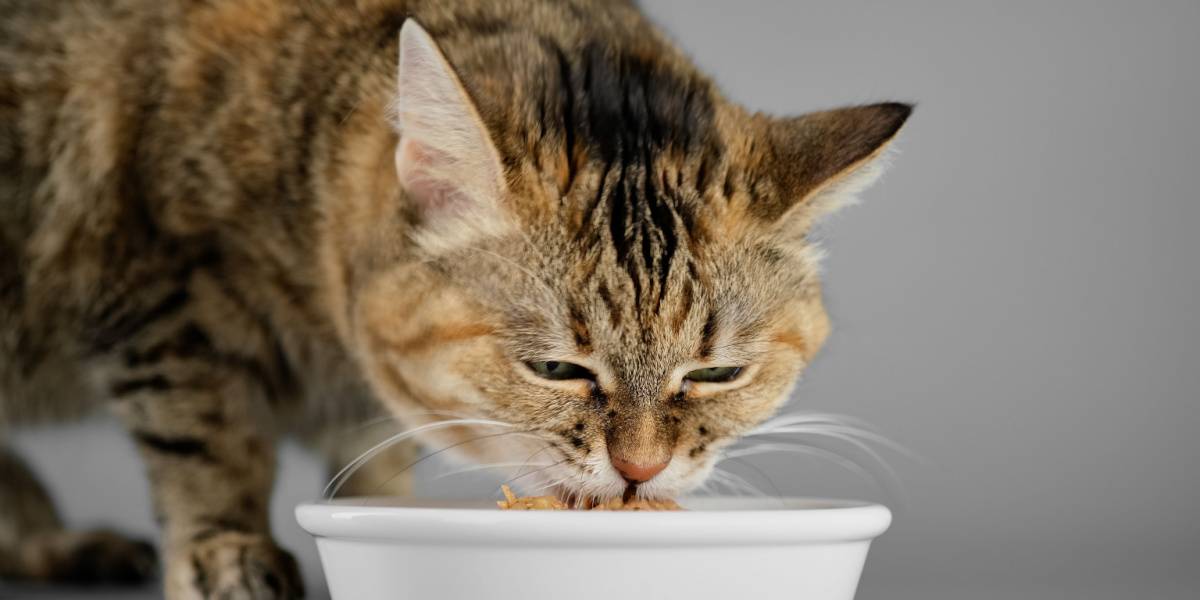
Given orally in small amounts, diatomaceous earth is said to kill and control intestinal parasites.
For use as a dewormer for intestinal parasites, it is widely suggested to use the following guidelines for daily amounts of food-grade diatomaceous earth:
- Small cats and kittens weighing less than 7 pounds (3 kilograms): ½ teaspoon
- Cats weighing 7 to 13 pounds (3 to 6 kilograms): 1 teaspoon
- Cats weighing more than 13 pounds (more than 6 kilograms): 1½ teaspoons
Some sources suggest these same amounts would be used if feeding diatomaceous earth as a dietary supplement.
When used for deworming purposes, most sources suggest using it for at least seven days to kill adult worms. However, because intestinal parasite life cycles involve not just adult worms but other life stages that are constantly recurring as they reproduce and mature, continuing use for 30 days to capture any developing adults is often suggested.
Using Diatomaceous Earth To Kill Fleas
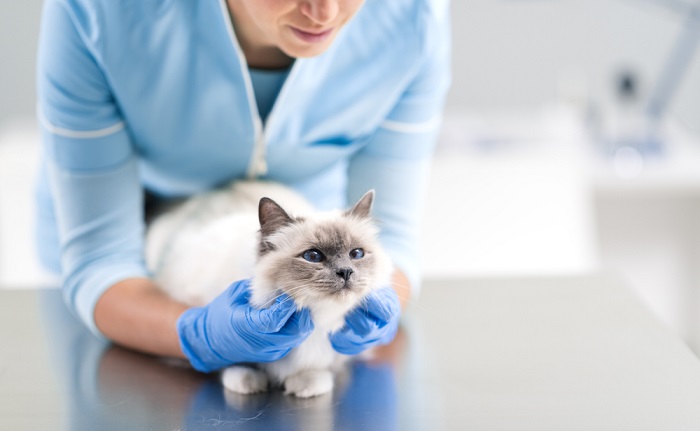
Some veterinarians recommend sprinkling diatomaceous earth in the cat’s environment rather than putting it directly on a cat’s body.
When using diatomaceous earth for cats for management of an active flea infestation, the powder can be applied directly on the cat, taking great care to avoid the nose, mouth, and eyes. Only a small amount that provides even coverage throughout the coat needs to be used. Take care not to over-apply it.
When using for an active infestation, many suggest keeping it on the cat for at least 24 hours, but then to give the kitty a bath to remove dead fleas, flea dirt, flea eggs and larvae, and any remaining diatomaceous earth before reapplying more if needed. It might not need to be applied directly to the cat further after a good bath, as long as diatomaceous earth has been applied appropriately to the home environment as well.
There are some veterinarians who are proponents of using diatomaceous earth in cats for fleas who do not recommend applying it directly on the cat for reasons previously mentioned like risk of inhalation, and skin irritation.
Instead, some vets propose using the powder in the environment only, including carpeting, furniture, and bedding. When the cat comes in contact with the environmentally applied amounts, this will also help to directly kill fleas on the cat’s body. This might be a safer approach when using constantly for flea prevention purposes, but might be less effective or take longer if your cat has a high burden of live fleas.
When using it in the home environment, it’s best to ensure a consistent coating of the powder. Filling up a salt shaker-like container to use to sift/sprinkle the powder evenly is the best way to apply it.
When applying to materials that have long or deep fibers, like carpet, many suggest keeping the diatomaceous earth in place for at least two to three weeks during an active infestation before vacuuming. Because of the flea life cycle that might continue for weeks, continuous treatment of the environment may be needed for at least one to three months.
If fleas are still seen as a concern after one month of use, an exterminator might be needed to treat the home environment, and your veterinarian should be consulted on other safe flea-control products to use.
Keep in mind that because part of how diatomaceous works to kill fleas is its absorbent properties, it will not work well if it is already damp or wet. This is important to remember when bathing your cat, especially to get rid of fleas, as you will want to wait until the cat is completely dry before applying more.
This is also important to keep in mind in very warm humid environments. If it’s warm and humid inside the home, using it in the home environment might be less effective.
When using outdoors, it usually must be applied much more often to the lawn and garden in humid/temperate zones than in regions where the air is dry and more arid.
Also Read: 5 Best Cat Dewormers
In Summary
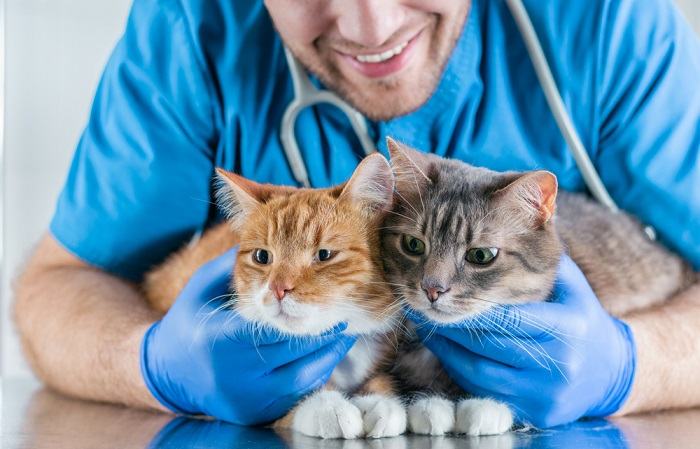
Much of what we know about diatomaceous earth is anecdotal; there is very little scientific research about its use for parasite control.
Diatomaceous earth is a natural powdered material with mechanical properties that can be effective at killing fleas, ticks, and other insects and parasites. Direct topical use on a cat should be avoided if possible due to risks presented by inhalation and contact with the skin. It may be used environmentally in the home as well as outdoors as a natural or non-chemical alternative for pest management.
Use of diatomaceous earth as a parasiticide is based on anecdotal evidence, or personal experience, with its use as opposed to scientific research based evidence for its use. It can be utilized as a non-chemical alternative for some parasite control if avoiding use of chemical or drug products is desired. Always make sure to discuss your flea, tick, and internal parasite prevention goals and plan with your veterinarian.
Drug Dosing Disclaimer: We are only able to provide doses for medications that are FDA approved for use in cats and only as the label guidelines dictate. For medications that are used off-label we can only provide guidelines and safety information for use. Safe and appropriate dosing for off-label medications can only be determined by a primary care veterinarian.
We encourage you to work with your veterinarian to determine if a particular medication is appropriate for your cat. Changing or adjusting a dose for your cat on your own without consulting with a veterinarian can carry risk. We do not encourage use of medications prescribed for human use in pets without first consulting with a primary care veterinarian.
